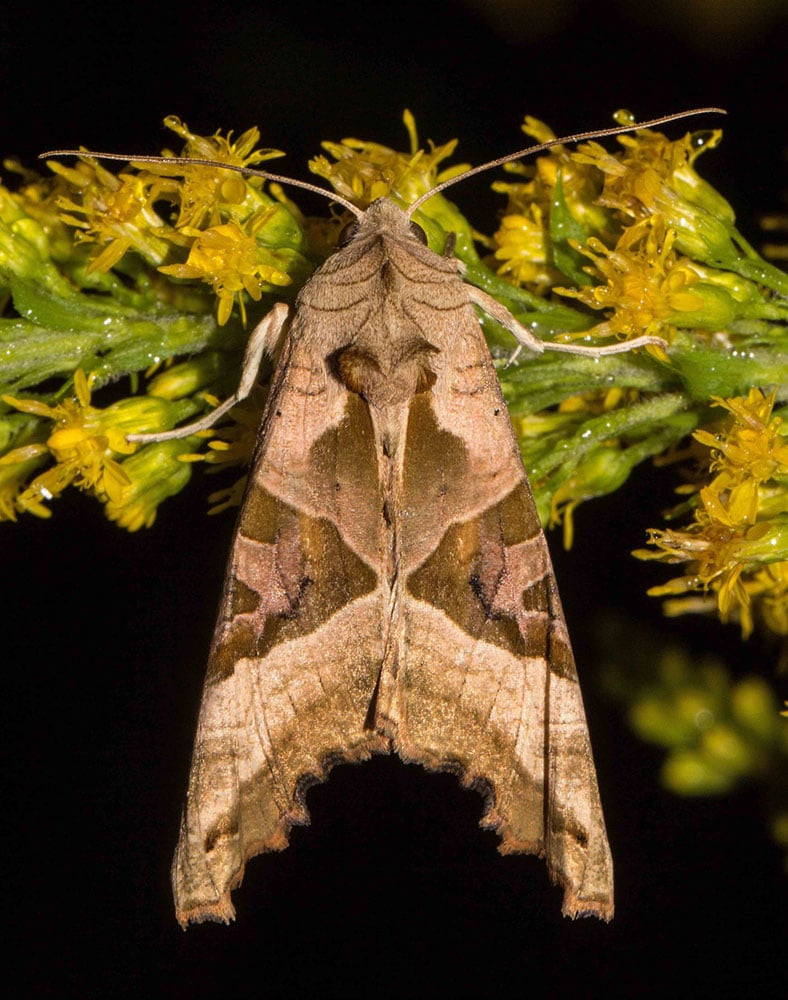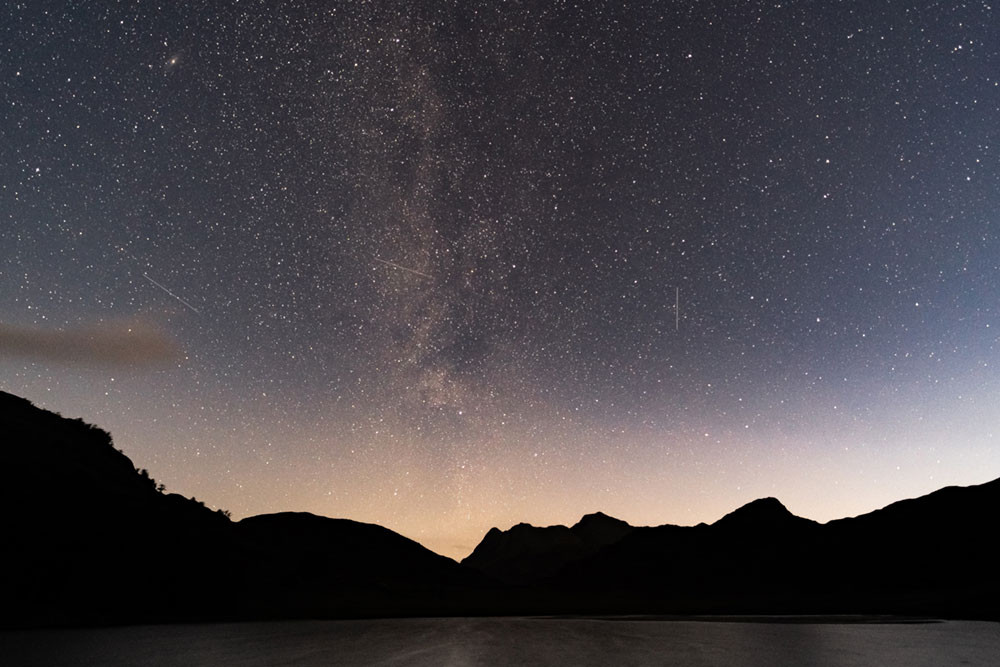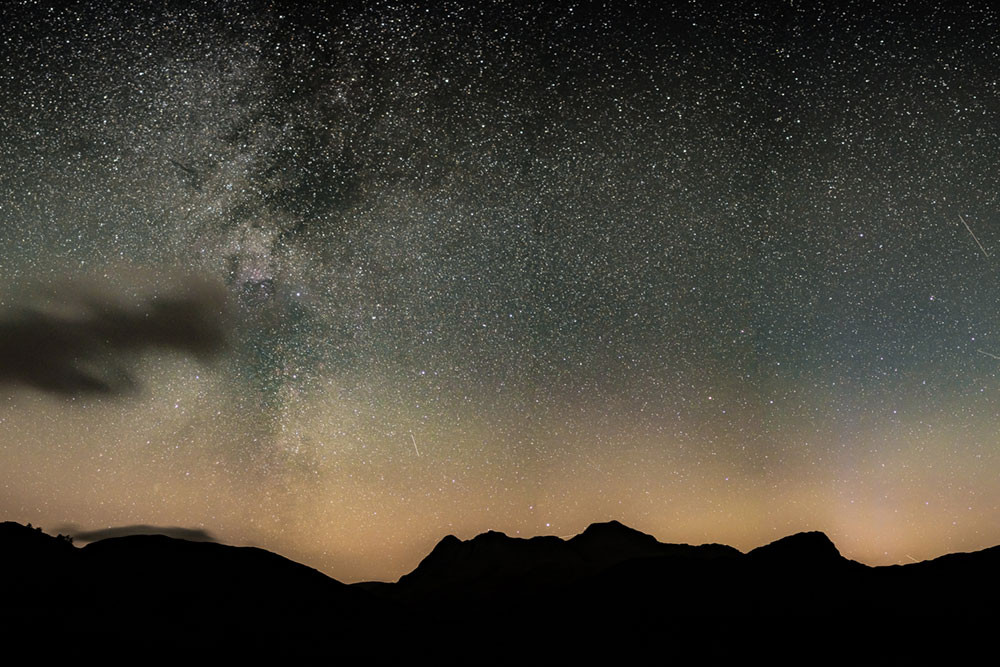The Dark Skies in Cumbria, UK
Silvery pools. Jutting peaks. Lush fells. The untamed majesty of the Lake District has enthralled visitors for centuries. Now though, a less earthly natural asset is taking centre stage – a second landscape reflected in the glassy lakes below: the night sky.
Cumbria boasts some of the darkest skies in the UK, making it a prime spot for stargazing and one of the last places in the country to see the Milky Way. From the deep glacial valley of Wasdale to the ancient Grizedale Forest, designated Dark Sky Discovery Sites pepper the area.
But the darkness of the sky and the serenity it brings is under threat. From security lights to street lamps, light pollution is drowning the brilliance – and disrupting the rhythms – of the nocturnal world.
While ocean plastic and fossil fuels are recognised environmental blights, many people don’t realise light pollution poses a problem. But whether throwing migratory birds off-course or triggering earlier springs, the link between light pollution and devastating changes in natural patterns is undeniable.
Night swims
Advocates of dark skies, we want our guests to get outdoors and enjoy the night sky, even from the lake. Colin Hill, our resident open water swimming expert takes monthly full moon swims from our hotel jetty along the shores of Ullswater, as well as stargazing swims when the moon is less full and you can see more in the sky. Book online and join one during your stay.

In partnership with Cumbria County Council and Thorn Lighting UK, Jack’s project is overseeing the installation of the UK’s first dark skies and wildlife-friendly LED street lighting, called NightTune, in five initial pilot locations. “Not only are these new lights brilliant at reducing light pollution,” says Jack, “they’re also supporting the Council’s lighting replacement programme achievement of reducing annual energy consumption by 60% and saving more than 9,000 tonnes of carbon emissions.”
This February, the second Dark Skies Cumbria Festival – a starry extravaganza of astronomical talks, films and activities – dazzled audiences.
“It was all online due to Covid restrictions,” explains Jack. “But we had some amazing speakers, from astronomers to adventurers, photographers and authors. The way everyone shared such a wealth of knowledge and passion for dark skies was truly inspiring. Although I can’t wait to have events outside again under the stars for real!”

Wild signs and star paths
One of the night sky enthusiasts speaking at this year’s festival was author Tristan Gooley.
Described as a “Sherlock Holmes of the natural world,” Tristan knows how to navigate the nocturnal wilderness. With bestselling books including Wild Signs and Star Paths and the just-released The Secret World of Weather to his name, he’s passionate about celebrating the night sky – and teaching others how to decode the clues it holds.
“What I do isn’t all about necessity; it’s about engaging with nature in a culturally enriching way,” he explains. “When you give someone the tools to tell the time using the night sky, of course, there are lots of other, quicker methods – but by doing it that way, we get our brain neurons firing differently.
“If you take a journey of just five minutes using the stars or the moon as your guide, you form an entirely different relationship with the sky and your surroundings. It makes you feel as though you’re creating a bond with your ancestors.”
Tristan is brimming with suggestions of ways to read the night sky. “We can forecast the weather using the stars,” he explains. “When they twinkle more, it’s a sign of moisture in the upper atmosphere, which means it could rain the following day.
“The stars can also tell you how far north or south you are. If you stretch out your fist so that the bottom of your fist sits on the horizon, and then you count how many fists fit from there to the North Star, that number tells you how high the horizon is in 10 degree lots, and that reveals how far north or south you are in the country.”
“We can forecast the weather using the stars. When they twinkle more, it’s a sign it could rain the following day.”
With no need for equipment, Tristan’s style of natural navigation is super-accessible. “My work’s all about hands-free. Every sign I write about or teach uses the naked eye. After all, nature is always making a map for us. Everything outdoors is a clue and a sign.”

Adventures after dark
Tristan’s back-to-nature approach is shared by fellow night-sky aficionado, stargazing guide and astrophotographer Gary Lintern. “An observatory is no match for getting out into the wild under a blanket of stars,” says Gary. “When you allow yourself to get lost in the infinite expanse of space – it’s a humbling experience.”
But there is one new gadget that Gary’s looking forward to trialling on his lakeside night walks: wireless headsets. “It’ll mean I can give commentary while maintaining social distancing – but I can also play music over them. Classical music makes a great accompaniment to the night sky!”
Gary regularly leads stargazing groups in the Lakes, yet the intensity of Cumbrian night skies still manages to disarm him.
“I went out to take some photographs of the Milky Way around Derwentwater last September,” he recalls. “Part way round, my torch packed in and I realised I couldn’t see a thing. It’s only when something like that happens that you realise just how dark it is. It’s quite magical.”
While the lighter, shorter summer nights can mean less opportunity to see stars, Gary has another twilight phenomenon to look out for in the skies above.
“At this latitude, we get something called noctilucent clouds, or ‘night-shining clouds’ in June/July. If you look to the north, in the same direction as Aurora – and the skies are dark enough – you’ll see a beautiful shimmering blue glow. They’re made from ice crystals and are only visible in the astronomical twilight.”
For the best nocturnal vistas, Gary reminds us that the moon is not always our friend. “If you try stargazing when there’s a full moon, there’s that much light you may as well be in the city centre. Although there’s something undeniably beautiful about being out in the wilds in moonlit scenery.”

Astral escapades
For Francine Bult, who works on the Cumbria Tourism marketing team, stargazing fits perfectly with the slow travel movement.
“There’s real demand now for experiential breaks and off-the-beaten-track experiences,” she says. “Dark skies tourism is something we’re promoting internationally, as well as to our UK audience. It’s a chance to show what the area has to offer beyond the usual daytime activities, and for people looking to visit in quieter periods too.”
A born and bred Cumbrian lass, Francine grew up in the Eden Valley, where inky skies and sparkling stars go with the territory. But one of her most cherished stargazing memories hails from the summer just passed.
“I was staying in a glamping pod in the Langdale Valley,” she recalls. “Because of the glass doors, you could look out while lying in bed and see up above the trees and the tops of the Langdale pikes, with all the stars twinkling away. It was incredible.
“We want to encourage Cumbrian businesses to develop their own new experiences and immersive ways for people to take in the night sky,” explains Francine. “The guided stargazing walks with Forestry England are great for families. Then there’s dark sky foraging, where you use traditional bushcraft skills, forage for your dinner and cook it over an open fire while you sit around and look up at the stars. And the night swims at Another Place are amazing, of course!”
“If you look to the north, in the same direction as Aurora – and the skies are dark enough – you’ll see a beautiful shimmering blue glow. They’re made from ice crystals…”
Whether from the water or around the fire, however you choose to admire the splendour of the Cumbrian night sky, helping to reduce light pollution and preserve the darkness isn’t as tricky as you might think.
“Unlike other forms of pollution which will take decades to sort out,” says Jack, “by switching off or changing your lights to dark skies friendly ones, you make an instant, positive impact on the environment.”
When it comes to reasons to stargaze, Jack has a reassuringly Northern (and thrifty) final thought: “I always say the night sky is a totally ‘free’ display – and you don’t get much for free these days!”
Find out more about Dark Skies Cumbria and plan your stargazing break.
8 things you can do to help the Lake District in its drive for darker skies
Celebrate the beauty of dark skies and spread the word! Get involved in the annual Dark Skies Cumbria Festival and try night-time activities in the area like stargazing walks or moonlit swims here at Another Place.
Turn off lights whenever you’re not using them.
If you need to read from a map or find your way, use a red light. White light has a much bigger impact on night vision than red.
Apply to become a Lake District Dark Skies Volunteer and help measure light pollution across the National Park.
If you’re a homeowner, only install outdoor lighting where you really need it.
Use motion sensors, dimmers and timers on your outdoor lighting.
Shield all outdoor lights and direct them downward to minimise harmful glare and sky glow.
Donate to the ‘Saving our Night Skies’ appeal through Friends of the Lake District.